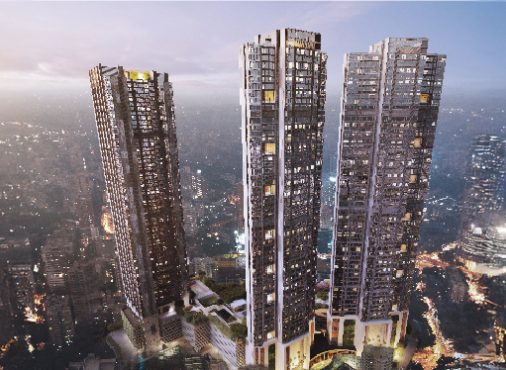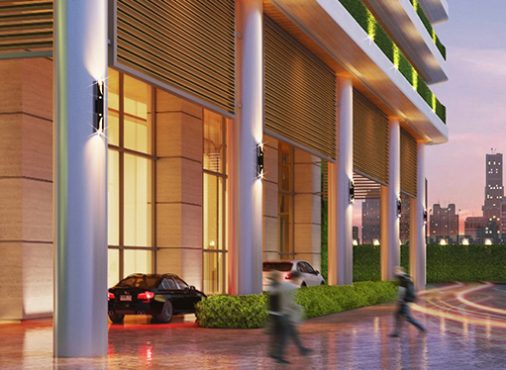In today’s world, the phrase “real estate business” carries with it a responsibility that extends far beyond financial returns. It’s no longer enough to simply develop land; we must do so with a keen awareness of our environmental impact.
Sustainable development is not just a buzzword; it’s a necessity for preserving our planet and creating communities that can thrive for generations to come. This article goes into the crucial aspects of environmentally responsible land investment, showing how you can align your financial goals with a commitment to a healthier planet.
The good news? These two objectives are not mutually exclusive; in fact, they can be powerfully synergistic.
Environmental Impact Assessment
Before any shovel hits the ground, a thorough Environmental Impact Assessment (EIA) is paramount. This process involves a meticulous evaluation of the potential effects a development project might have on the surrounding environment.
Key considerations include:
- Land Use Evaluation: This looks at the current state of the land, its history, and how its use might change and affect nearby areas, ensuring that no critical habitats are destroyed.
- Biodiversity Considerations: Protecting local plant and animal life is crucial. Developments should be planned to minimise disruption and, wherever possible, enhance natural habitats.
- Resource Conservation: EIAs assess how the land’s resources, like soil and water, may be impacted, ensuring sustainable water use and minimal pollution.
- Township Living Benefits: Thoughtfully planned townships, like Rustomjee Belle Vie, which offer a mix of residential and commercial spaces, reduce urban sprawl and dependence on personal transport, thus reducing carbon footprint.
Sustainable Development Practices
Adopting sustainable practices isn’t simply about meeting regulations; it’s about innovation and long-term vision. This incorporates:
- Green Building Standards: Utilising energy-efficient building materials and designs that optimise natural light and ventilation and reduce carbon footprints.
- Natural Resource Preservation: Actively conserving natural resources through methods such as rainwater harvesting, wastewater recycling, and soil preservation. A unique highlight of Rustomjee Belle Vie is the afforestation program, aiming to plant 50,000 native flowering trees to enhance biodiversity and promote ecological balance.
- Eco-friendly Infrastructure: Investing in infrastructure that supports green initiatives. This can include electric vehicle (EV) charging stations, community gardens, and waste management systems.
- Luxury Green Homes: It’s not about compromising comfort but rather elevating it. Sustainable practices now create luxurious homes with a smaller environmental impact. Think expansive windows that maximise natural light, smart home tech that regulates energy, and indoor-outdoor spaces that connect you with nature.
Location Selection for Green Development
Where a project is located is just as critical as how it’s built. Responsible location selection involves:
- Natural Habitat Preservation: Choosing locations that minimise the impact on existing ecosystems and avoid areas with unique biodiversity.
- Water Resource Management: Ensuring that construction and future usage will not strain or pollute local water supplies.
- Green Space Requirements: Adequate green spaces, including parks, gardens, and common areas, that enhance the community’s well-being and contribute to local biodiversity are required.
- 4BHK Eco-Friendly Options: Look for developments that offer spacious living options while adhering to sustainable building practices, which is now possible, proving that eco-friendliness and luxury can exist harmoniously.
Read Also: 4 BHK Flats in Mumbai | Dadar East, Prabhadevi, BKC, Khar, Juhu
Environmental Regulations
Navigating environmental regulations can be complex, but understanding them is vital for responsible land business:
- Current Compliance Requirements: Developers must be aware of and adhere to all current laws and policies related to environmental impact, land use, and building codes.
- Future Policy Trends: Keep abreast of emerging trends in environmental policy and adapt your practices to meet new and more stringent expectations.
- Green Certifications: Seek out certifications that validate your commitment to sustainability. LEED, GRIHA, and IGBC certifications are great examples and can provide marketing advantages for your land business projects.
- Urban Development Guide: Comply with local urban development plans to make sure your projects are aligned with regional sustainability goals.
Sustainable Investment Strategies
Adopting sustainable investment practices involves:
- Green Technology Integration: Invest in technologies that reduce environmental impact, including solar panels, smart grids, and advanced waste management systems.
- Renewable Energy Options: Integrate renewable energy solutions such as solar power, wind energy, and other options to reduce dependence on non-renewable sources of energy.
- Water Conservation Methods: Implement water conservation strategies, including rainwater harvesting, greywater recycling, and water-efficient fixtures.
- Community Planning Insights: Look at how the community will live in the project. Ensure they have easy access to amenities that promote sustainable living and well-being. Consider forest trails, gardens, canals, walkable streets, shared community resources, and connections with nature.
Read Also: Why Living In A Gated Community Is Beneficial For You?
Financial Benefits of Green Investment
Sustainable development not only helps the environment but also makes economic sense.
- Long-Term Cost Savings: Green buildings often have lower operating costs through reduced energy and water consumption.
- Government Incentives: Many governments now offer tax breaks, rebates, and other financial incentives for green building and sustainable developments.
- Market Premium Potential: Green homes are becoming highly desirable and can command a premium price in the market.
- Return on Investment (ROI): Sustainable projects are attractive to long-term investors and often yield better returns when they are viewed as sustainable.
Future-Proofing Your Investment
Considering future trends is important for a resilient investment:
- Climate Change Considerations: Develop projects with climate resilience in mind, considering factors like increased flooding, heat, and water scarcity.
- Adaptation Strategies: Plan for long-term adaptation by including features that will ensure the longevity of the project under changing climate conditions.
- Sustainability Trends: The trends in sustainability and environmental consciousness are constantly evolving, stay informed to adopt best practices that are aligned with your development goals.
- Market Evolution: Understand how the market is evolving. This will help you better serve your customer base and make sustainable development a core part of your planning.
Implementation Guidelines
Moving from theory to practice involves:
- Sustainable Development Checklist: Adopt a detailed checklist that covers environmental impact, resource management, and other sustainability considerations.
- Professional Consultation Needs: Partner with consultants who have expertise in sustainable practices. These professionals help with planning and meeting sustainability requirements.
- Monitoring and Reporting: Implement a system for monitoring and reporting the environmental impact of your project, ensuring accountability and opportunities for improvement.
- Continuous Improvement: Commit to ongoing improvements, learning from your experiences, and incorporating new best practices.
Ready to invest in a future that’s both prosperous and sustainable? Explore the eco-conscious luxury of Rustomjee Belle Vie. Discover spacious plots and a community designed with the planet in mind.
FAQs
- How does sustainable land investment affect returns?
Sustainable land investments often show better long-term returns due to reduced operational costs like energy and water, government incentives such as tax breaks, and increasing market demand for eco-friendly properties, making them financially viable in the long run.
- What are the key environmental regulations to consider?
Key regulations include those related to environmental impact assessments (EIA), land use planning, building codes, water usage and conservation, waste management, and regional planning guidelines, ensuring your projects align with local and national standards.
- How can I ensure my investment is environmentally responsible?
You can ensure your investment is environmentally responsible by partnering with certified professionals, seeking relevant green building certifications, using sustainable materials, integrating green technologies, and adhering to best practices in sustainable development.
- What green certifications are important?
Certifications like LEED (Leadership in Energy and Environmental Design), GRIHA (Green Rating for Integrated Habitat Assessment), and IGBC (Indian Green Building Council) are important, validating your project’s commitment to high sustainability standards and environmental responsibility.
- How do sustainable practices impact property value?
Sustainable practices enhance property value by reducing operational costs, making the properties attractive to environmentally conscious buyers, and demonstrating a long-term commitment to quality, thus boosting the resale value.
- What are the costs of implementing green features?
While some upfront costs may be higher for green features, these are typically offset over time by savings on energy and water bills and by potential government incentives that lower initial costs, making green features financially sensible.




